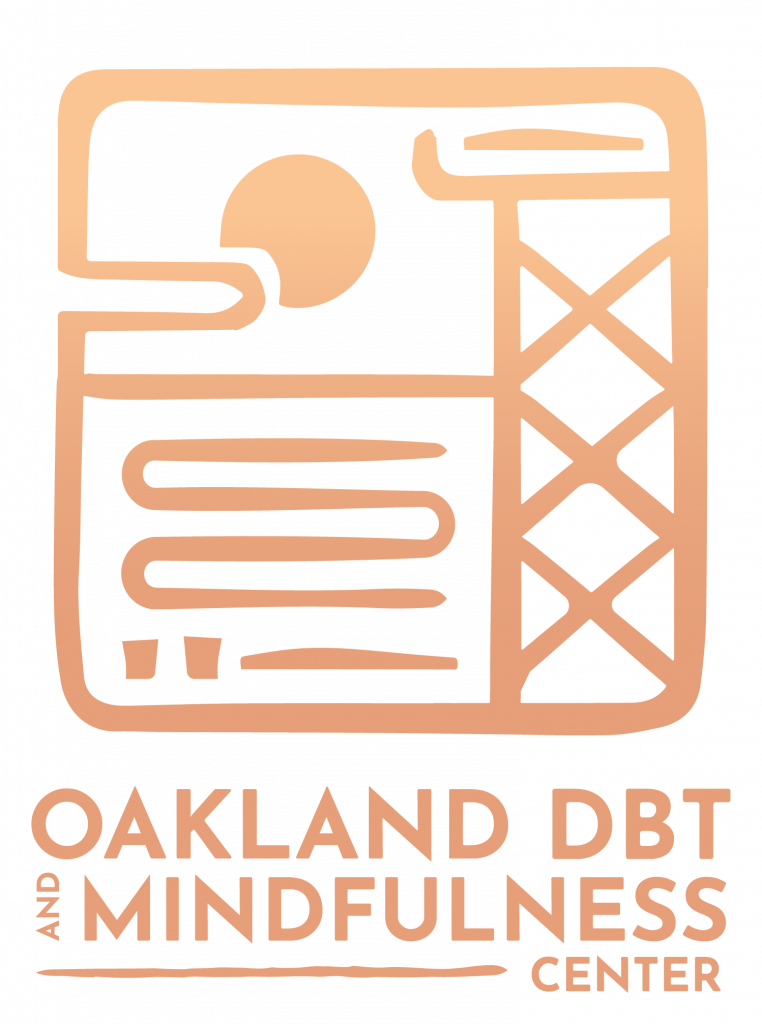What is DBT? What is dialectics? These are common questions people ask when they first encounter Dialectical Behavior Therapy. While the words may sound clinical, their meaning is deeply human. DBT, or Dialectical Behavior Therapy, is an evidence-based approach that helps people find balance between acceptance and change, two forces that shape every part of our lives. At its core, DBT teaches skills for navigating emotions, building healthier relationships, and living with greater resilience. To truly understand DBT, it is also essential to explore dialectics. This philosophical foundation guides this therapy and invites us to move beyond black-and-white thinking into a world of both-and possibilities.
The Origins of DBT: Why It Was Developed

Dialectical Behavior Therapy was created in the late 1980s by psychologist Dr. Marsha Linehan. Originally designed to treat individuals living with borderline personality disorder (BPD), DBT has since grown into one of the most widely used and researched therapeutic approaches worldwide.
Linehan’s insight was groundbreaking: traditional cognitive-behavioral therapy (CBT) helped some people, but for those with intense emotional pain, it wasn’t enough. Many individuals felt invalidated when therapy focused solely on changing their thoughts and behaviors. DBT addressed this by introducing the principle of dialectics—balancing acceptance of what is with the effort to change what can be.
This combination made DBT not only compassionate but also practical. Over time, it has been adapted to treat a wide range of concerns, including depression, anxiety, PTSD, substance use, eating disorders, and difficulties with emotion regulation.
What Makes DBT Unique?
Unlike many therapies that focus primarily on insight or behavior change, DBT integrates multiple elements into one comprehensive approach:
- Validation and Acceptance: Acknowledging that your experiences, feelings, and struggles are real and meaningful.
- Change-Oriented Skills: Offering concrete tools to cope with distress, regulate emotions, and improve communication.
- Dialectical Philosophy: Encouraging flexibility in thinking by holding two seemingly opposing truths at once.
The result is a therapy that is both deeply compassionate and highly structured, helping clients not only survive but build what Linehan calls a “life worth living.”
Also Read: What is dialectic in DBT?
Core Principles of DBT
DBT is based on four foundational skills that clients learn and practice both in therapy sessions and in their daily lives.
1. Mindfulness: Living Fully in the Present
Mindfulness is the backbone of DBT. It’s about learning to notice thoughts, emotions, and sensations without judgment. By practicing mindfulness, individuals can respond to challenges with awareness rather than reacting automatically.
For example, instead of spiraling into self-criticism after making a mistake, mindfulness helps you pause, observe the situation, and choose a more compassionate response.
2. Distress Tolerance: Surviving Difficult Moments
Life brings pain, and sometimes that pain can feel unbearable. Distress tolerance skills teach someone how to cope with crises without exacerbating the situation. Techniques such as self-soothing, distraction, and radical acceptance empower individuals to move through painful moments with strength rather than avoidance or harmful behaviors.
3. Emotion Regulation: Understanding and Managing Feelings
Strong emotions can feel overwhelming, leading to impulsive actions or emotional shutdowns. Emotion regulation skills enable individuals to identify, label, and understand their feelings. From there, they learn strategies to reduce vulnerability to extreme emotions, balance mood swings, and respond with clarity instead of reactivity.
4. Interpersonal Effectiveness: Building Healthier Relationships
Relationships are central to human life, but they can also be a source of conflict and pain. Interpersonal effectiveness skills give people tools to communicate needs clearly, set boundaries, and maintain self-respect while also nurturing connections with others.
Together, these four skill sets create a practical roadmap for navigating life’s challenges.
What is Dialectics?

To fully understand DBT, it’s essential to explore the concept of dialectics.
At its simplest, dialectics is about balance and synthesis. It recognizes that two seemingly opposite things can both be true at the same time. For example:
- “I am doing the best I can,” and “I want to do better.”
- “This situation is painful,” and “I can find ways to cope with it.”
Without dialectical thinking, we often get stuck in rigid, all-or-nothing perspectives. Black-and-white thinking increases anxiety, shame, and hopelessness. Dialectics opens the door to flexibility, compassion, and Growth.
Everyday Examples of Dialectics in Action
Dialectical thinking isn’t just for therapy sessions—it’s a tool for everyday life.
- Parenting: “I love my child deeply,” and “Sometimes parenting feels overwhelming.”
- Work Stress: “My job is stressful right now,” and “I am grateful for the stability it provides.”
- Personal Growth: “I made a mistake,” and “I am still worthy of love and respect.”
This both/and perspective reduces judgment, builds resilience, and creates space for change without rejecting the present moment.
How DBT Works in Practice
DBT is typically structured around four key modes of treatment:
- Individual Therapy: One-on-one sessions where clients work with a therapist to apply DBT skills to their personal challenges.
- Group Skills Training: A classroom-like setting where clients learn and practice DBT skills with the support of peers.
- Phone Coaching: Access to therapists between sessions for guidance in applying skills during real-life crises.
- Consultation Teams: Therapists themselves meet regularly to stay grounded, supported, and effective in delivering DBT.
This multi-layered structure ensures that clients are supported both in acquiring new skills and in applying them to their daily lives.
Who Can Benefit from DBT?
While DBT was initially created for borderline personality disorder, research has shown it is highly effective for many different concerns:
- Anxiety and depression
- Post-traumatic stress disorder (PTSD)
- Eating disorders
- Substance use disorders
- Self-harming behaviors
- Relationship difficulties
- Chronic stress and emotional dysregulation
Anyone who feels overwhelmed by emotions, stuck in unhealthy patterns, or disconnected from themselves or others can benefit from DBT.
The Evidence Behind DBT
DBT is one of the most researched therapeutic approaches. Clinical studies have consistently shown its efficacy in reducing self-harm, suicidal behaviors, hospitalizations, and emotional distress. It also improves overall quality of life, emotional stability, and relationship satisfaction.
This evidence-based foundation sets DBT apart, giving clients confidence that the skills they are learning are proven to work.
The Role of Radical Acceptance
One of DBT’s most transformative concepts is radical acceptance. Instead of fighting reality or getting stuck in “why me?” thinking, radical acceptance invites individuals to acknowledge life as it is—even when it’s painful.
Acceptance does not mean approval. It simply means stopping the struggle against reality, which frees up energy to focus on how to respond and move forward.
Integrating DBT Into Daily Life
The true power of DBT lies in its application outside the therapy room. Skills like mindfulness, emotion regulation, and dialectical thinking can be practiced in daily routines:
- Take a mindful breath before responding to a stressful email.
- Using distress tolerance techniques during an argument.
- Reminding yourself of both/and truths when faced with self-doubt.
Over time, these small practices add up to profound changes in how people experience life.
Why DBT Resonates with So Many People

DBT combines compassion with accountability. It doesn’t minimize suffering, nor does it let people remain stuck. Instead, it validates the reality of pain while empowering clients with tools to create change.
This balance is what makes DBT so powerful. It honors human complexity while offering a structured, hopeful path forward.
Getting Started with DBT
If you’re considering DBT, it’s essential to work with a qualified therapist who can tailor the approach to your unique needs. Many therapy centers, including Oakland DBT and Mindfulness Center, offer individual sessions, skills groups, and integrative care designed to support clients in building a life worth living.
Whether you’re seeking to manage overwhelming emotions, heal from trauma, or strengthen relationships, DBT provides a framework that combines acceptance with the possibility of Growth.
Conclusion
So, what is DBT? And what is dialectics? DBT is an evidence-based therapy that teaches individuals to balance acceptance and change, utilizing practical skills to foster resilience, emotional regulation, and connection. Dialectics, the philosophy at its core, reminds us that life is not black and white—that two truths can coexist at once.
Together, they offer not just a therapy but a way of approaching life with compassion, flexibility, and hope. If you’re ready to explore how DBT can support your journey, please get in touch with us today to connect with a therapist who is trained in this approach. Healing begins with one step, and DBT offers a roadmap for moving forward.
FAQs (Frequently Asked Questions)
How is DBT different from other types of therapy?
Unlike traditional talk therapy, DBT combines acceptance with change-focused strategies. It teaches practical skills like mindfulness, distress tolerance, and emotion regulation. This balance helps clients not just cope but build a meaningful, sustainable life.
Can DBT help if I don’t have a specific diagnosis?
Absolutely. DBT is not only for people with certain conditions—it’s useful for anyone who struggles with overwhelming emotions, stress, or relationship challenges. Many clients use DBT skills as preventive tools to strengthen resilience in daily life.
How long does DBT usually take?
The length of DBT depends on your goals and needs. Many structured programs last approximately six months to a year, but some clients continue for longer to further develop their skills. The focus is always on creating lasting changes, not rushing the process.
Is DBT offered only in group settings?
No. DBT typically includes both individual therapy and group skills classes, supported by phone coaching if needed. Some people begin with separate sessions, while others benefit most from combining both approaches for well-rounded support.
What should I expect in my first DBT session?
In the first session, your therapist will get to know you, learn about your challenges, and introduce the principles of DBT. Together, you’ll identify goals and begin exploring skills that can help right away, even before the full program starts.












